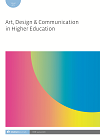
Full text loading...

Design’s scope of practice has grown from one that was traditionally defined by materials and processes to one where designers are working on some of the most pressing challenges of our times. Once a reactive, artefact-based practice (e.g. poster, typeface, chair, etc.), design is now being situated as a proactive, social and participatory practice focused on outcomes as much as artefacts. Historically, as an academic subject, professional practice and research area, design has suffered from a lack of formal, established research frameworks and theoretical practices. By drawing on established literature, this article makes the case for the use of methods and practices developed in Participatory Action Research (PAR) to inform and enrich design practice, research and particularly education. The article identifies three shared areas between PAR and design that offer an opportunity for further interrogation; these are: a central concern of working with people; the use of iteration and reflection; and the measuring of success through change.

Article metrics loading...

Full text loading...
References


Publication Date:
https://doi.org/10.1386/adch_00013_1 Published content will be available immediately after check-out or when it is released in case of a pre-order. Please make sure to be logged in to see all available purchase options.